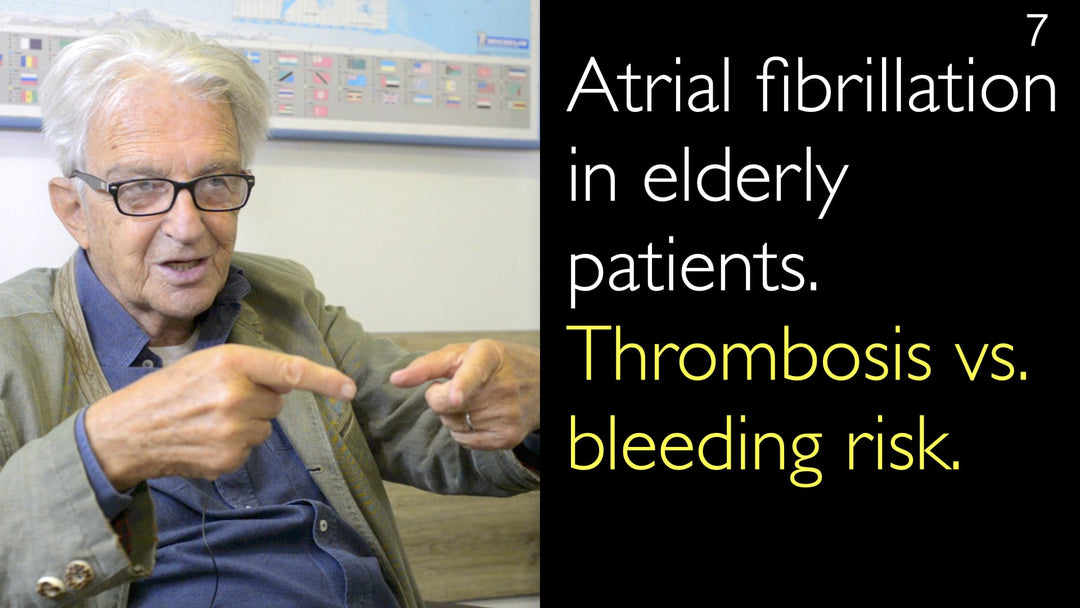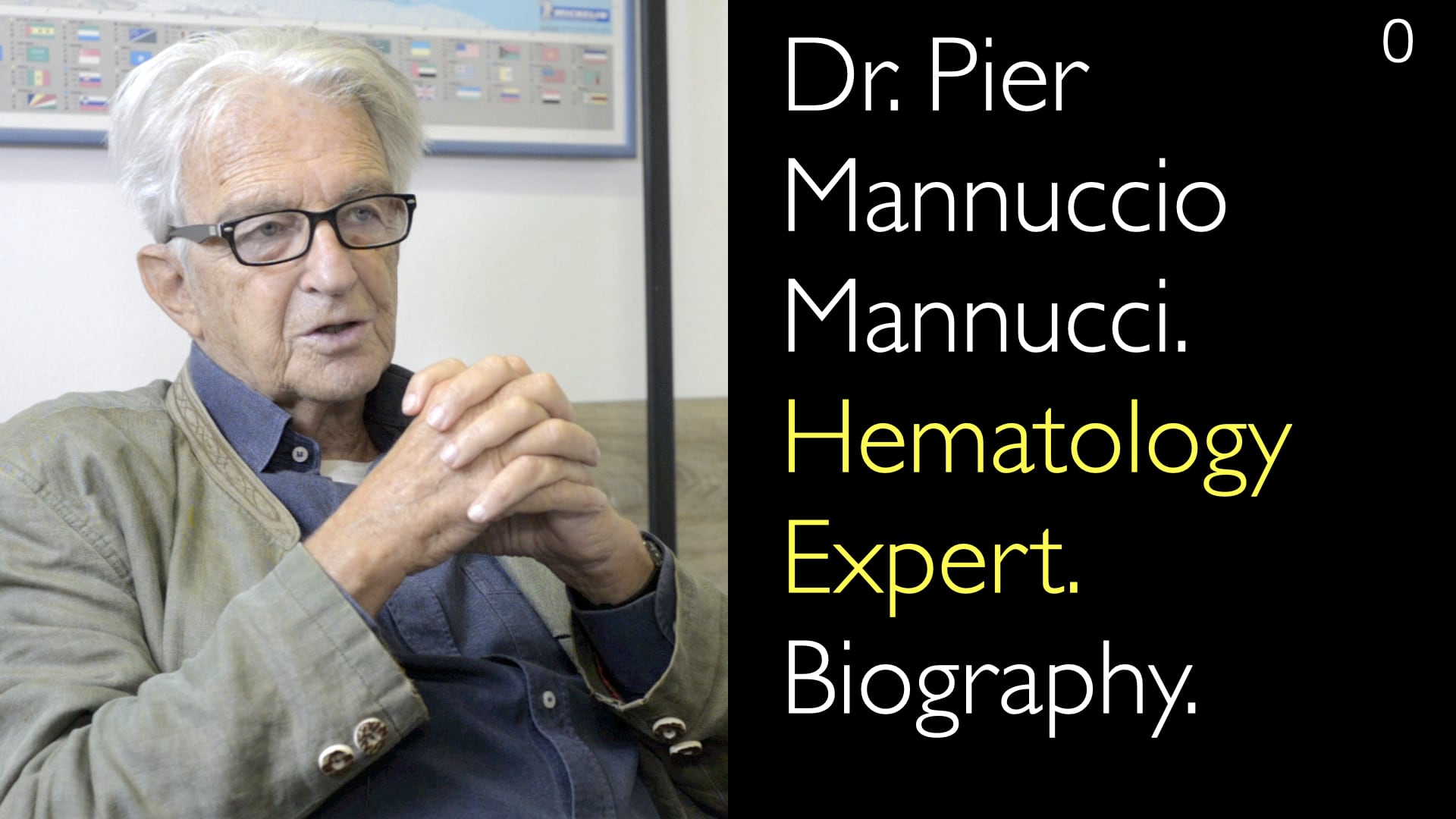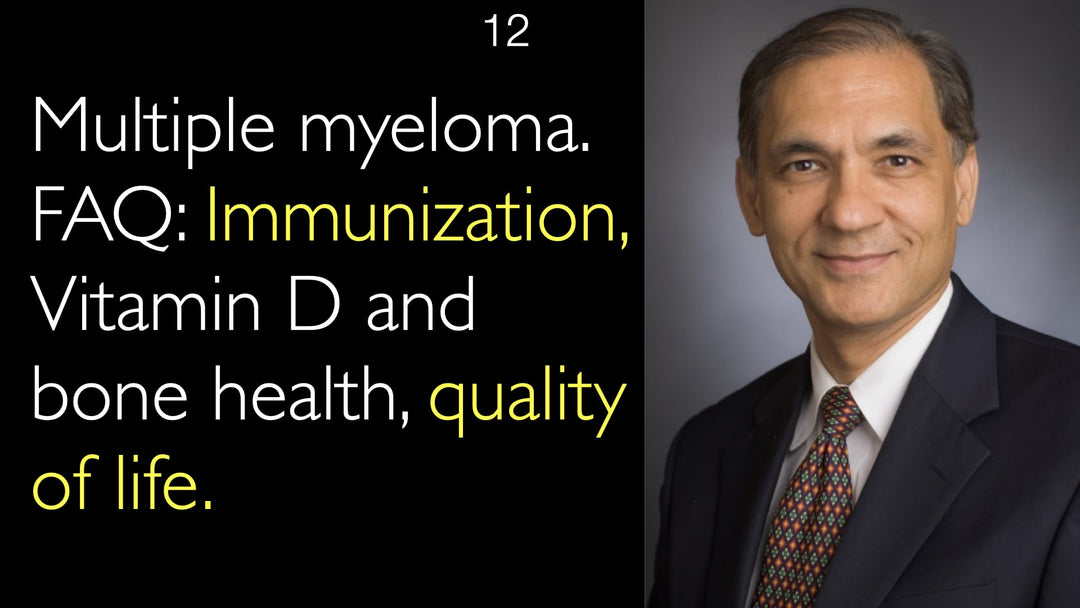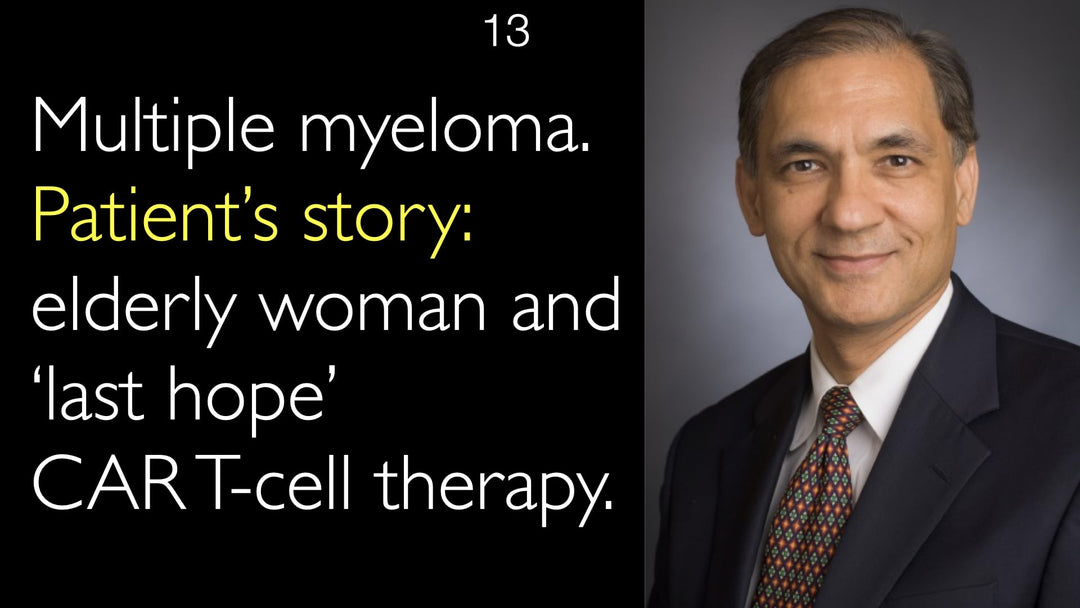Dr. Pier Mannucci, MD, a leading expert in thrombosis and hemostasis, explains the critical balance between stroke prevention and bleeding risk in elderly patients with atrial fibrillation. He emphasizes that the risk of stroke significantly outweighs the risk of bleeding, even in patients over 90. Dr. Mannucci recommends the use of direct oral anticoagulants over acetylsalicylic acid. He elaborates on strategies for safer anticoagulation in the elderly, including dose adjustments and closer monitoring.
Behandling af atrieflimren hos ældre: Afvejning af slagtilfælde- og blødningsrisici
Spring til afsnit
- Atrieflimren hos ældre: En stigende forekomst
- Antikoagulation: Uundværlig terapi til forebyggelse af slagtilfælde
- Aspirins ineffektivitet til forebyggelse af slagtilfælde
- Strategier til håndtering af blødningsrisiko hos ældre patienter
- Fordele ved direkte orale antikoagulantier for ældre patienter
- Fuld transskription
Atrieflimren hos ældre: En stigende forekomst
Forekomsten af atrieflimren stiger markant med alderen. Ifølge dr. Pier Mannucci, MD, udgør 65-85-årige hele 70% af alle patienter med denne almindelige arytmi. Problemet er særligt udtalt i de ældste aldersgrupper, hvor cirka hver tiende person på 80 år eller derover har atrieflimren.
Denne høje forekomst er en væsentlig klinisk udfordring, som forværres af den aldrende befolkning i højindkomstlande. Samtalen mellem dr. Anton Titov, MD, og dr. Pier Mannucci, MD, understreger, at behandling af denne tilstand i en ældrende befolkning udgør et stigende og kritisk folkesundhedsproblem.
Antikoagulation: Uundværlig terapi til forebyggelse af slagtilfælde
Dr. Pier Mannucci, MD, er utvetydig: antikoagulation er en nødvendig behandling for de fleste ældre patienter med atrieflimren. Årsagen er den betydeligt forhøjede risiko for slagtilfælde og systemisk tromboemboli, som følger med diagnosen.
Han beskriver det kliniske dilemma som at være "mellem Scylla og Charybdis" – en klassisk metafor for at være fanget mellem to farer. Han fastholder dog, at risikoen for et ødelæggende slagtilfælde langt overstiger risikoen for en alvorlig blødning. Derfor må klinikere og patienter acceptere blødningsrisikoen for at opnå den større fordel ved forebyggelse af slagtilfælde.
Aspirins ineffektivitet til forebyggelse af slagtilfælde
Et centralt punkt for dr. Pier Mannucci, MD, er, at aspirin ikke er tilstrækkeligt til at beskytte ældre atrieflimrenpatienter mod slagtilfælde. Han udtrykker bekymring over, at nogle læger af frygt fravælger passende antikoagulation hos meget ældre voksne og i stedet vælger at ordinere aspirin.
Denne tilgang, uanset hvor velment, giver ikke tilstrækkelig beskyttelse mod tromboemboli. Dr. Mannuccis analyse bekræfter, at aspirin ikke er et egnet alternativ til korrekt antikoagulerende terapi i denne højrisikogruppe – en afgørende pointe fra hans diskussion med dr. Anton Titov, MD.
Strategier til håndtering af blødningsrisiko hos ældre patienter
Selvom han anbefaler antikoagulation, anerkender dr. Pier Mannucci, MD, at blødningsrisikoen er højere hos otticårige og halvfemsårige sammenlignet med yngre patienter. Denne forhøjede risiko omfatter både cerebrale og gastrointestinale blødninger.
Han skitserer praktiske strategier for at mindske risikoen. Dette indebærer at bruge antikoagulantier "med stor forsigtighed." En almindelig tilgang er at ordinere lavere doser af direkte orale antikoagulantier (DOAC'er) til ældre patienter. Desuden understreger han nødvendigheden af tæt overvågning af disse sårbare patienter gennem hele behandlingsforløbet for at sikre både sikkerhed og effekt.
Fordele ved direkte orale antikoagulantier for ældre patienter
Dr. Pier Mannucci, MD, fremhæver de særlige fordele ved direkte orale antikoagulantier for den geriatriske population. Han bemærker, at paradoksalt nok bliver risikoen for et katastrofalt slagtilfælde endnu højere i forhold til blødningsrisikoen ved meget fremskreden alder, hvilket gør DOAC'er særligt værdifulde.
Han peger på betydelige praktiske fordele, der forbedrer patientens livskvalitet og adherens. For en 80-årig patient kan hyppige besøg på en antikoagulationsklinik til monitorering være en stor byrde. DOAC'er eliminerer behovet for regelmæssig laboratoriekontrol (INR-testning), hvilket forenkler behandlingen. Denne brugervenlighed fører til meget højere adherencerater, hvilket sikrer kontinuerlig beskyttelse mod slagtilfælde.
Fuld transskription
Dr. Anton Titov, MD: Forekomsten af atrieflimren stiger med alderen. 70% af patienter med atrieflimren er mellem 65 og 85 år. Patienter med atrieflimren har en højere risiko for blodpropper og tromboemboli. Men samtidig har ældre patienter med atrieflimren også en højere risiko for blødning som komplikation til antikoagulationsbehandling.
Hvordan afvejes denne balance korrekt? Hvordan vælger man medicin og regimen til profylakse mod blodpropper hos ældre patienter med atrieflimren?
Dr. Pier Mannucci, MD: Som du nævner, har én ud af ti personer på 80 år eller derover atrieflimren, eller endnu flere. Også hos yngre voksne eller ældre mennesker er atrieflimren et stort og stigende problem, sandsynligvis på grund af befolkningens aldring, i hvert fald i højindkomstlande.
Som du siger, er vi mellem Scylla og Charybdis, som jeg skrev i en af de artikler, du læste. Jeg mener, at antikoagulation er uundværlig hos patienter med atrieflimren. Det er fordi risikoen for slagtilfælde er meget højere end risikoen for blødning. Så blødning er en risiko, man må acceptere.
Jeg er imod tendensen blandt nogle læger til at opgive antikoagulation hos ældre mennesker af frygt, især hos meget ældre voksne, og i stedet give dem aspirin. Aspirin beskytter ikke mod risikoen for slagtilfælde og tromboemboli.
Så jeg mener, at blødningsrisikoen bør accepteres, og at antikoagulantier bør bruges. Selvfølgelig skal man overveje andre faktorer. Risikoen for blødning, især cerebral og gastrointestinal blødning, er lavere hos yngre patienter med dyb venetrombose eller atrieflimren end hos patienter i 80'erne.
Alligevel må man acceptere denne blødningsrisiko. Det gør man også, selvom patienten er over 90 år. Selvfølgelig bruger man antikoagulantier med stor forsigtighed. Normalt bruger vi lavere doser af direkte orale antikoagulantier (DOAC'er).
Og selvfølgelig overvåger vi dem meget tæt. Men jeg vil sige, at paradoksalt nok er risikoen for et slagtilfælde højere end risikoen for blødning i den høje alder. Så antikoagulantier, og især de direkte orale antikoagulantier, er værd at bruge ved atrieflimren.
Af de grunde, jeg nævnte, kan det være et problem for en 80-årig patient at besøge antikoagulationsklinikken. Så adherencen blev meget højere med brugen af direkte orale antikoagulantier, som indtages oralt. Der er ikke behov for laboratoriekontrol.








